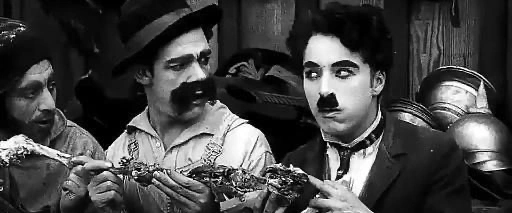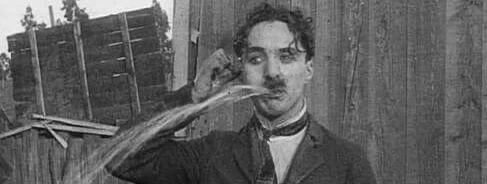Charlie Chaplin — Comedy Against Tyranny
When we hear the name Charlie Chaplin, we see the little Tramp — bowler hat, cane, and a bittersweet smile. But behind that comic mask was one of the boldest and most profound voices of the 20th century. Chaplin wasn’t just an actor — he was an artist who used cinema to speak about suffering, injustice, and tyranny.
Born in poverty in London in 1889, Chaplin experienced hardship early. His father abandoned the family, his mother struggled with mental illness, and he began performing as a child — not for fame, but to survive. This gave him a deep empathy for the poor and the forgotten.
He rose to fame during the silent film era, but his films were never silent in message. Through expressions, gestures, and visual storytelling, he explored poverty, industrial cruelty (Modern Times), and the indifference of power. His character — the Tramp — became a symbol of the "little man" fighting against a world that was cold and mechanical.
But his most powerful statement came in The Great Dictator (1940), his first sound film. In the midst of World War II, when Hitler was still in power, Chaplin dared to mock fascism — portraying both a Jewish barber and a parody of the dictator (Hynkel).
In the film’s final speech, Chaplin delivers a timeless plea:“We think too much and feel too little… More than machinery, we need humanity.”
That speech remains one of cinema’s greatest moments — a call to conscience, unity, and hope.
Later in life, Chaplin was targeted by political paranoia in the U.S. and accused of anti-American sentiment. In 1952, he was effectively exiled. He spent the rest of his life in Switzerland, returning to the U.S. only once — in 1972 to receive an honorary Oscar. The audience gave him a 12-minute standing ovation.

The Great Dictator marked a turning point — not just in Chaplin’s career, but in the cultural role of cinema itself. It was a fearless artistic act at a time when neutrality was safer and silence more common. The film’s final speech — where the barber, mistaken for the dictator, delivers an impassioned plea for peace, unity, and compassion — remains one of the most powerful moments in film history. It was a direct appeal to humanity, not just to moviegoers, and it resonated far beyond the screen.
Chaplin’s genius lay not only in his physical comedy and timing but in his ability to layer humor with heartbreak. He made people laugh, then made them think. Films like City Lights (1931), which follows the Tramp’s attempt to help a blind flower girl, blend slapstick with aching tenderness. The final scene, in which she finally sees him for who he is, is as emotionally raw as anything in dramatic cinema. That balance — between the absurd and the profound — became Chaplin’s signature.
Though often associated with the silent era, Chaplin resisted the move to talkies longer than most. He believed that visual storytelling was more universal — transcending language, class, and culture. Even when sound came into the picture, he used it deliberately and sparingly. He scored many of his films himself, composing musical themes that captured the soul of each story. His talent was not confined to acting and directing — he was a multi-disciplinary creator at a time when the industry was still discovering its potential.
However, Chaplin’s outspoken politics and refusal to conform to Hollywood’s increasingly conservative climate during the Cold War era led to controversy. His left-leaning views and criticism of capitalism and nationalism attracted scrutiny. In the 1950s, as anti-Communist hysteria gripped the United States, Chaplin became a target of the FBI and the House Un-American Activities Committee. While never proven to be a Communist, his refusal to testify and his growing criticism of U.S. policy made him persona non grata.
In 1952, during a trip to Europe, his reentry permit was revoked — effectively exiling him from the country that had made him a star. He relocated to Switzerland with his family and continued to work, though less frequently. His later films, such as A King in New York (1957), carried biting satire about American culture, surveillance, and the loss of privacy — themes that remain strikingly relevant.

Chaplin’s exile didn’t diminish his legacy. In fact, time only clarified his brilliance. In 1972, after two decades away, he returned to the United States to receive an honorary Academy Award. The moment was profoundly emotional — a standing ovation that lasted over 10 minutes, acknowledging not just his contributions to film, but his courage and conviction as an artist.
Until his death in 1977, Chaplin remained committed to the ideals that shaped his life’s work: that comedy could challenge cruelty, that art must serve truth, and that dignity belongs to everyone — even the poorest, the oddest, the most overlooked.
Today, Charlie Chaplin is more than a historical figure — he is a language of cinema itself. His silhouette is instantly recognizable, but more importantly, his legacy endures in every film that dares to mix laughter with meaning, and in every artist who uses their platform to speak for those without one.
He once said, “To truly laugh, you must be able to take your pain and play with it.” That’s exactly what he did — and in doing so, he gave the world something far more lasting than entertainment. He gave it empathy.
Close